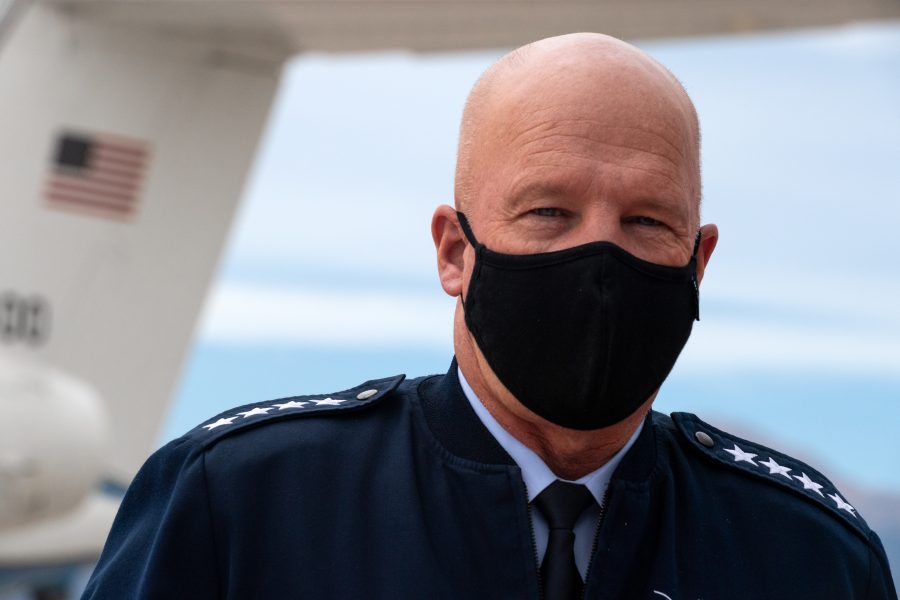The Space Force’s top general this week indicated the Air Force will create an organization to offer aircraft and other resources in support of U.S. Space Command, making it the final military service to do so.
“All the services will have a service component, because this isn’t space for space’s sake,” Chief of Space Operations Gen. John W. “Jay” Raymond said Dec. 2 at the annual West Coast Aerospace Forum, which is cohosted by AFA’s Mitchell Institute for Aerospace Studies, the RAND Corp., the Center for Strategic and International Studies, and MITRE. “This is a much broader view of joint warfighting and it’s going to require the full weight of the joint force to handle that.”
Proponents of military space reform cheered U.S. Space Command’s revival in 2019 as a major step toward cohesive daily operations of technology like GPS and intelligence satellites. But now that the Air Force is handing off satellites and radars to the Space Force, it needs to offer up Airmen and assets to support the new command—or risk having a smaller part in the joint fight.
In October, the Marine Corps became the latest service to create a dedicated organization to work with SPACECOM. Marine Corps Forces Space Command, run by USMC Maj. Gen. Matthew G. Glavy, will work with SPACECOM to lend operational support to Marines in the field.
The other service components are the Space Force’s Space Operations Command, the Navy’s U.S. Fleet Cyber Command, and the Army’s Space and Missile Defense Command.
SPACECOM is different from other combatant commands in that its satellites and radars support other parts of the military, while also relying on other organizations to protect its resources. For example, its navigation satellites guide weapons fired by aircraft flown in Afghanistan to their targets, but those same aircraft can also attack enemies that are threatening satellite ground controls.
That dual purpose adds nuance to the conversation: what air, intelligence, and cyber assets are most important to SPACECOM’s mission, if they must also help protect it? Frank Rose, a former deputy assistant secretary of state for space and defense policy who is now a senior foreign policy fellow at the Brookings Institution, suggested security forces could be in the mix as well.
A SPACECOM spokesperson said the organization is still exploring the possibilities with the Air Force.
“The Air Force is a critical partner in our mission, as evidenced by their recent support where they provided rescue forces on alert for NASA’s return to human space flight,” Maj. AnnMarie Annicelli said Dec. 1.
Annicelli was referring to the search-and-rescue specialists in the 45th Operations Group’s Detachment 3 at Patrick Air Force Base, Fla. Those Airmen fly HH-60 helicopters and HC-130 and C-17 planes for search and rescue, and deploy “Guardian Angel” boats to step in if something goes wrong for the humans launching or landing a NASA spacecraft over the ocean. They also rescue American astronauts if they are injured in a Russian Soyuz capsule landing, or if needed during commercial space launches and landings run by companies like SpaceX and Boeing.
Detachment members told Air Force Magazine earlier this year they’re not sure if their unique organization will be part of the Air Force or the Space Force in the long run. Right now, the group answers to SPACECOM as part of the 45th Space Wing—a Space Force organization.
“The reviews are happening right now on where’s the right place for us, and what does the unit need to really look like?” Maj. Chris Hearne, the detachment’s mission support division chief, said in February. He suggested falling outside the Space Force might be best. “We’re hoping the odds are in our favor.”
